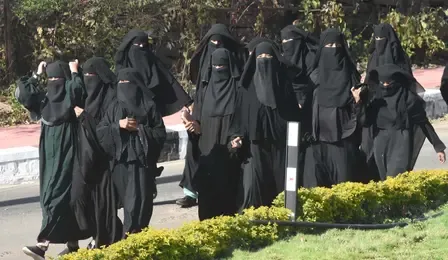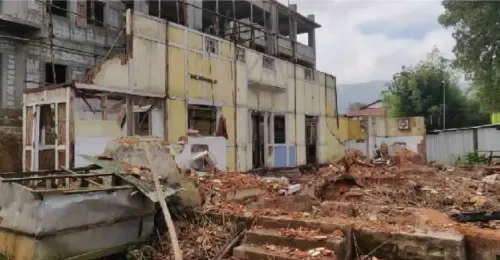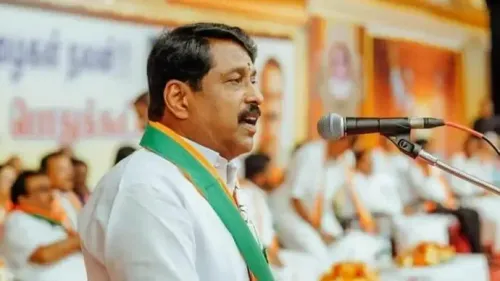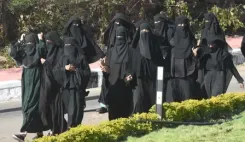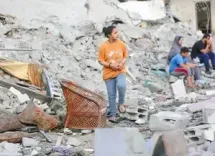Is the End of Red Terror Near? Maoist Surrenders Reveal Growing Discontent
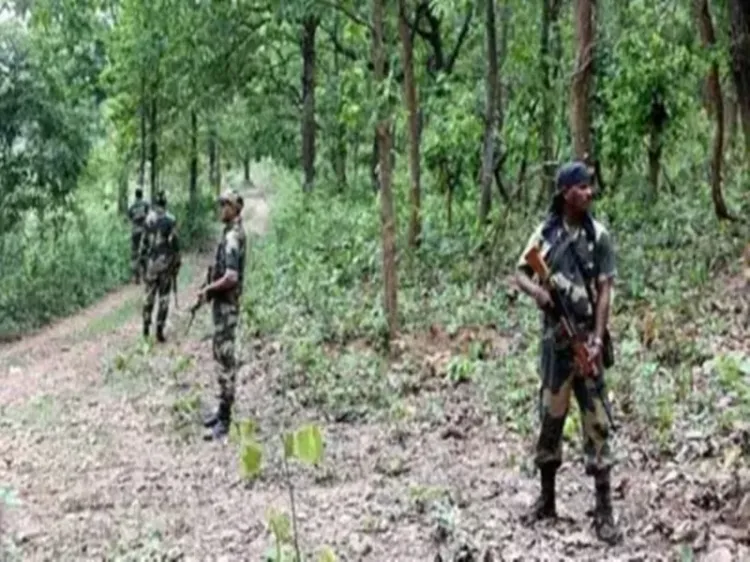
Synopsis
Key Takeaways
- Maoist Surrenders: An increase in surrenders, including top leaders, signifies a possible decline in Maoist influence.
- Government Initiatives: Development initiatives are crucial in eroding the support base for Maoists.
- Security Operations: Ongoing operations are successfully neutralizing Maoist leaders and cadres.
- Public Discontent: Many Maoists are disillusioned with the traditional violent ideology.
- Regional Stability: The situation in previously contested districts is improving due to government efforts.
New Delhi, Oct 14 (NationPress) The initiatives for development undertaken by the Union government have significantly diminished the support for Maoists in rural and underdeveloped regions. This, combined with a relentless campaign against terrorism, has led to an increase in the surrender of Maoist cadres, including prominent leaders.
In a noteworthy turn of events, a senior Maoist leader, Mallojula Venugopal Rao also known as Sonu, surrendered along with 60 other members in Maharashtra’s Gadchiroli district late on Monday, October 13.
The occurrence, albeit anticipated following communications from various Maoist factions proposing different options—including negotiations with the government and conditional surrenders—still represents a significant setback for the movement.
Earlier this month, during a public gathering in Jagdalpur, the center of Chhattisgarh’s Bastar district, Union Home Minister Amit Shah dismissed the possibility of negotiations with such groups until they relinquished their weapons and complied with the government’s policies on surrender and rehabilitation. Notably, Bastar was once a hotbed of insurgency.
The Home Ministry’s list of designated ‘terrorist organizations’ includes the Communist Party of India (Marxist-Leninist) – People’s War and all its affiliated groups, as well as the Maoist Communist Centre (MCC) and the Communist Party of India (Maoist).
It is important to note that the Communist Party of India (Marxist-Leninist) Liberation is not classified among these underground factions; rather, it actively engages in the democratic processes of the nation.
Meanwhile, insurgents have been increasingly disillusioned with the principle that “political power grows out of the barrel of a gun,” a doctrine imposed upon them by Mao Zedong. Adhering to this ideology has resulted in numerous casualties among their ranks, with many injured members unable to receive medical assistance due to a life spent in hiding. The Maoists' retaliatory actions during this period included ambushes on police convoys and targeted killings of informants, mostly poor rural individuals disgruntled with the Maoists’ unconventional and deadly tactics.
One such method involved severe punishments—often death—administered in makeshift courts. The sharp decline in public support and the significant loss of personnel over the past decade prompted many within the organization to advocate for a shift toward peace and discussions with the authorities.
Venugopal, a member of the Communist Party of India (Maoist) politburo and a strategic leader, reportedly voiced similar sentiments in meetings that were ultimately dismissed. This violent Left Wing Extremism (LWE) can trace its origins back to the 1960s in Naxalbari, West Bengal, but the contemporary Maoist movement is rooted in Andhra Pradesh.
The insurgency later expanded northward toward the Nepal border, where the porous boundary provided a convenient route for acquiring support and weaponry from other countries. The dense forests of Andhra Pradesh, Maharashtra, Madhya Pradesh, Odisha, and Bihar offered sufficient concealment, culminating in what is now recognized as the “Red Corridor.”
A history characterized by brutality and bloodshed unfolded along this route. However, recent security operations and local surrenders have intensified throughout the Red Corridor, spurred by coordinated state-led offensives and an increased paramilitary presence. Numerous mid-level cadres have surrendered in Chhattisgarh, Jharkhand, Odisha, and even West Bengal.
Since 2017, counter-insurgency measures, coupled with improved intelligence sharing and expanded state development projects, have curtailed Maoist access to safe havens, thereby impeding their operations. Many area commanders have either been eliminated in confrontations or surrendered to authorities.
Although the Maoists have executed occasional retaliatory strikes in forested regions, these actions have diminished in scale and are now largely confined to traditional strongholds. By 2020, the movement began exhibiting signs of organizational strain, prompting the Union and state governments to enhance surrender and rehabilitation initiatives. Numerous Maoists have surrendered during coordinated events supported by local administrations and outreach from security agencies.
Beginning in 2023, there has been a notable increase in the attrition of senior cadres; police and paramilitary forces have reported successful operations resulting in the removal or capture of several mid- and senior-level leaders, leading to a significant decline in operational tempo and a marked reduction in violent incidents across many previously contested districts.
While Maoist retaliation has continued, these incidents have been sporadic and, at times, high-profile; however, they have proven inadequate to reclaim their regional dominance.

